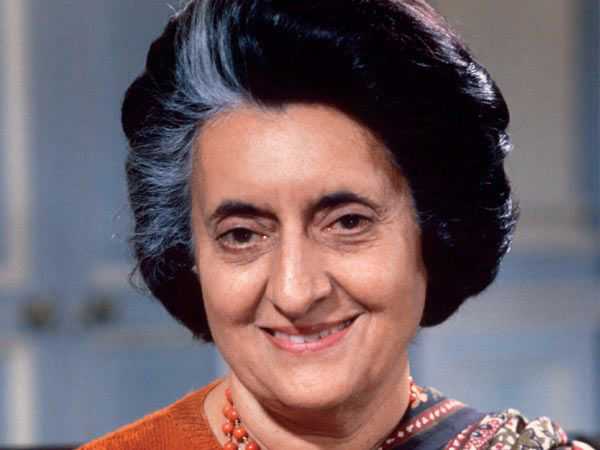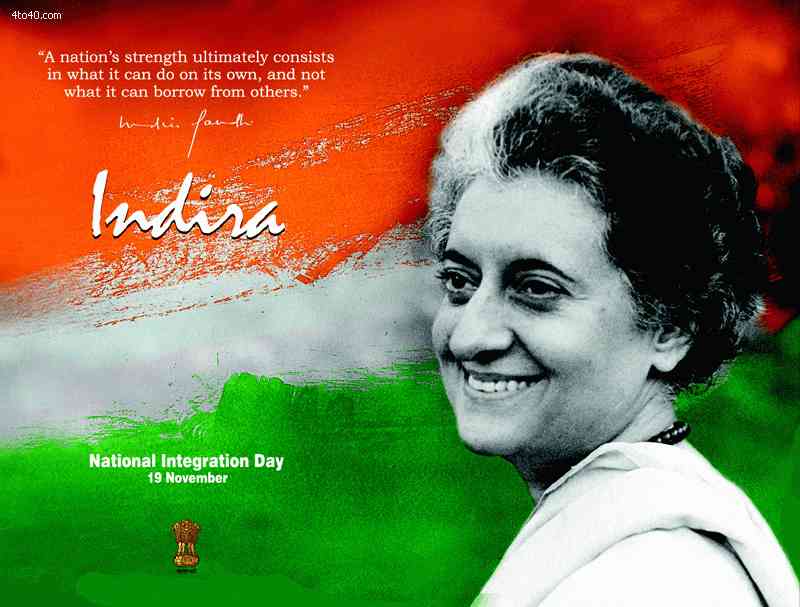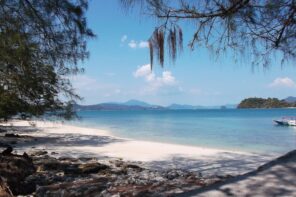Known as the ‘Iron Lady of India’, Indira Gandhi was the third Prime Minister for India who served the nation from 1966 till 1984 (till her assassination). She was the daughter of India’s first Prime Minister, Jawaharlal Nehru and was the first and till date the only female Prime Minister for the country.
Indira Gandhi was born in Allahabad, India on November 19, 1917. Born into a politically prominent Nehru family, she had served as Prime Minister for three consecutive terms between 1966 and 1977 and for the fourth term in the beginning of 1980. Her Sikh bodyguards had assassinated her in 1984.
Her Early Life
Born into a politically influential Nehru family, she grew up in an intense political atmosphere. Despite her last name being Gandhi, she was not related to the statesman, Mohandas Gandhi. Motilal Nehru, her grandfather was a prominent Indian nationalist while her father Jawaharlal Nehru was a key figure during the Indian Independence and was the first Prime Minister for free India. Her father had dedicated himself to India’s fight for independence that resulted in years of imprisonment for him and a lonely childhood for Indira. She was brought up with a great exposure to politics and was particularly influenced by her father. She had once said: “My father was a statesman, I’m a political woman. My father was a saint, I’m not.”
College at Oxford
The only child of Jawaharlal Nehru, Indira Gandhi was stubborn and highly intelligent young woman who had received outstanding education in Swiss boarding schools. After the death of her mother in 1936 of tuberculosis, she appeared for the Oxford entrance exam in 1937 and got admission at Somerville College, Oxford. During her stay there, she was often sick and soon returned to India without completing her degree. She was later conferred an honorary degree by Oxford.
Indira Nehru had known Feroz Gandhi since her childhood days. However this acquaintance matured into a relationship during their stay in UK for higher studies. They finally got married in March 1942 and were blessed with two sons- Rajiv Gandhi and Sanjay Gandhi.
Entry into Indian politics
On her return to India in 1941, Indira supported her father and started getting involved in the Indian Independence movement. Soon after independence, she was appointed to serve in her father’s government and was elected to the prominent 21-member working committee of the Indian National Congress in 1955. Though she was operating as an unofficial personal assistant to her father, she exercised considerable power within the government. After the death of Jawaharlal Nehru in 1964, she was appointed as the Minister of Information and Broadcasting under Lal Bahadur Shastri’s cabinet. Shortly after the unexpected demise of Lal Bahadur Shastri, Indira Gandhi was chosen to be the new Prime Minister of India with the help of Congress Party President, K. Kamaraj.
The First & Only female Prime Minister of India
As a Prime Minister, she showed exceptional political skills and drove out many senior Congressmen out of the party and power. This internal dissent within the party caused the split in the Indian National Congress in 1969.
She was popular amongst the electoral owing to her personality and populist economic measures. She introduced a lot of economic policies for the country and was primarily focused on improving the agricultural productivity. She oversaw the implementation of the five-year plans, two of which successfully met the targeted growth. She also nationalized fourteen major commercial banks, which proved to be highly effective as the geographical coverage of these banks increased from 8200 to 62000. To improve employment opportunities and promote organized labor, she also nationalized coal, copper, steel, refining, textile and insurance industries. Nationalization of the oil companies in 1971, made Indian Oil Corporation, Hindustan Petroleum Corporation and Bharat Petroleum Corporation. Under her leadership, the Green Revolution brought an incredible change in the agricultural production of India. India could now manage to manage a decent portion of its demands from domestic production instead of solely depending on imports.
India soon became a regional power in South East Asia with significant economic, political and military power. She led India to a decisive victory with Pakistan in 1971 by supporting the East Pakistan Civil war, which led to the formation of Bangladesh. She provided refuge for over ten million Pakistani civilians who had fled to India in order to escape the prowling Pakistani army. She had eventually also offered troops and arms for the Bengali movement in 1971. Also under her governance, India made its first nuclear bomb in 1974.
However in the 1970s, the Indian economy was plagued with high inflation, low living standards and corruption, all of which led her to impose an emergency in 1975. The country was still recovering from the war against Pakistan and was troubled by oil and drought crisis. The emergency lasted for 21 months from Jun 1975 to Mar 1977. In this state of emergency in India, political opponents were imprisoned, constitutional rights were revoked and a strict censorship was imposed on the press. She soon earned the reputation of being authoritarian who was willing to ignore democratic principles for power.
Her son Sanjay Gandhi was also detested by the electoral for his thoughts on slum clearance and enforced sterilization to control India’s growing population. These economic pressures and dissatisfaction amongst the masses was the reason she lost the elections in 1977 and was temporarily out of office. She was also found guilty of using state machinery for this election campaign and was banned from contesting elections for the next six years.
The troubled Last Term
Soon after she won the elections again and returned to office in 1980. But during this period she was increasingly involved in the conflict with Sikhs in Punjab who later assassinated her in 1984 for her launch of Operation Blue star. The motive of the operation was to restore law and order in Punjab and strip clean of Bindrawale and his men. Jarnail Singh Bindrawale was demanding the establishment of Khalistan, an independent Sikh homeland. While the Khalistan movement had started in early 1940s, it was most popular in 1980s under his leadership. Bindrawale, the leader of Damdami Taksal had a strong influence on the Sikh youth in Punjab. He propagated the original values of Sikhism and convinced people to follow the rules of the religion.
Operation Blue Star
Initially, Indira Gandhi saw Bindrawale as a valuable political ally because of his popularity in Punjab. Bindranwale strongly opposed Arya Samajis and Nirankaris who wanted Sikhs to start shaving and assimilate into Hinduism. For six years, his propaganda had been that the Hindu majority had made Sikh slaves in India. His young supporters had wreaked havoc in Punjab by attacking police and extorting money from villagers.
To address the unrest in Punjab, Indira Gandhi launched Operation Blue Star. Operation Blue Star was a British military operation between Jun 3-8, 1984 to eliminate and establish control over Jarnail Singh Bindrawale and his followers who had sought cover in Amristar’s Harmandir Sahib Complex. The operation had two phases- Operation Metal, which was confined to Harmandir Sahib complex, and Operation Woodrose that was launched in Punjab countryside to capture any suspects. The operation was carried out by Indian army and according to the official estimate, 492 civilians were killed while some independent claim the number to be 5000 or higher. Apart from this the CBI was held responsible for seizing historical artifacts and manuscripts from Sikh Reference Library and for burning them down.
The Aftermath
The Operation Blue Star was severely criticized for its no holds barred approach. It was brutally carried out by the Indian Army troops with helicopters, tanks, heavy artillery, armored vehicles and chemical weapons. The Operation could have been avoided using blockade tactics, which was later adopted by Rajiv Gandhi in Operation Black Thunder.
There was a huge tension and uproar amongst Sikhs in India as the Indian army tanks pounded the Sikh shrine, Akal Takht that stands opposite to the Golden Temple. Many Sikh soldiers were mutinied and many resigned from armed and civil services and several returned awards they had received from Indian government. Due to this operation, Indira Gandhi had earned the hatred of Sikhs who had declared Bindrawale as a martyr of the 21st century.
The Assassination of Indira Gandhi
Four months after the operation, on October 31, 1984, two Sikh bodyguards assassinated Indira Gandhi in her own garden. The bodyguards, Satwant Singh and Beant Singh fired 33 rounds of bullets on her. The primary reason for the assassination was claimed to be the launch of Operation Blue Star. They wanted to avenge the insult of the Sikh community. She was taken to All India Institute of Medical Sciences but was declared dead after operation. She was cremated near Raj Ghat and the ground is now known as Shakti Sthala. Soon after her demise, Anti-Sikh riots broke out immediately in Delhi and spread across other parts of the country. Over 2000 people were killed in Delhi alone, most of them being Sikhs.
The Legacy of Indira Gandhi
To honor the great political leader, the central government launched a low cost housing programme for poor, Indira Awaas Yojana. The international airport at the capital of India, New Delhi, is also under her name- Indira Gandhi International Airport. She also has a university, Indira Gandhi National Open University named after her. Indian National Congress also conceptualized and established the Indira Gandhi Award for national integration in 1985. She was named as the ‘Woman of the Millennium’ in a BBC poll in 1999. She was also selected as one of the ten Oxasians, illustrious Asian graduates from the University of Oxford, and was also conferred with an honorary degree by them. She was also awarded the highest state award by the Government of Bangladesh for her outstanding contribution to their independence forty years later.







